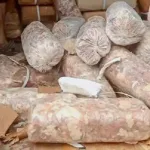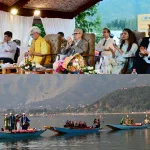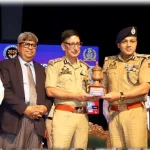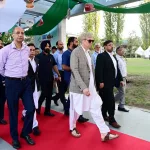BOOK REVIEW
The publication “Dev Vardutt Shalaan Kautasya -The Gotra of Chrungoo Family” authored by Shri Ashwani Kumar Chrungoo is a remarkable achievement that showcases his unwavering dedication and tireless efforts. This labour of love is a testament to his diligence and meticulous research in compiling the genealogy and lineage of the Chrungoo family, a feat that requires immense patience and attention to detail.
The publication, released in Jammu, Mumbai and Delhi NCR recently, meticulously documents the family’s records, origin, and settlements in Kashmir, providing a comprehensive account of their history and cultural heritage. Shri Ashwani’s work is truly commendable, and his efforts to preserve the family’s heritage are appreciated not only for their academic value but also for their role in promoting cultural awareness and appreciation.
The family tree chart spanning 10 generations and 300 years is a remarkable achievement. I’m pleased to provide feedback and my insights from an academic and research perspective. It is like recording history from a micro level so that the documentation becomes possible eventually. Moreover, it has authenticity and approval of facts inherently interrelated and interwoven.
The significance of this work extends beyond the Chrungoo family, as it sheds light on the rich cultural heritage of the Kashmiri Pandits. The gotras of Kashmir are not just simple clan names; they carry the sacred history, tradition, and cultural values that have been passed down through generations. Kashmiri Pandits have made significant contributions in various fields, and their impact is evident across different strata of society, from great scholars and high-ranking officials to farmers and artisans.
Each individual has played a role in shaping the rich heritage of Kashmir, and it is through works like Shri Chrungoo’s that we can appreciate the depth and complexity of this heritage. The publication of “Dev Vardutt Shalaan Kautasya –Gotra of Chrungoo Family” is a valuable contribution to the field of Kashmir studies and a testament to the importance of preserving cultural heritage for future generations.
In the context of Kashmir, I firmly believe that documenting family history is crucial for Kashmiri Pandits particularly in context of the displacement. Every family should take it upon themselves to write about their lineage, as it provides a sense of connection to their past, achievements, and failures. This is particularly important for our community, which has faced numerous challenges and forces that have threatened our identity.
I urge all community members to follow the lead of people like Shri Ashwani Kumar Chrungoo, who have taken the initiative to document their family history. By doing so, we can collectively preserve our heritage and cultural identity. I propose that every household maintain a family tree, prominently displayed in their drawing room, as a reminder of our rich history and civilization, which spans over 5,000 years.
By embracing our heritage and documenting our family histories, we can foster a sense of pride and unity within our community. This will enable us to stand together and confront the challenges we face, while also celebrating our unique cultural identity. I would like to thank the author of the Book, Shri Ashwani Kumar Chrungoo for taking the lead in this endeavour and inspiring others to follow suit.
Let us work together to preserve our cultural heritage and keep our community alive, both spiritually and culturally. By doing so, we can ensure that our rich traditions and customs continue to thrive for generations to come.
(The author is an artist, art historian & former Director, IGNCA -J&K Regional Centre & Goa)








